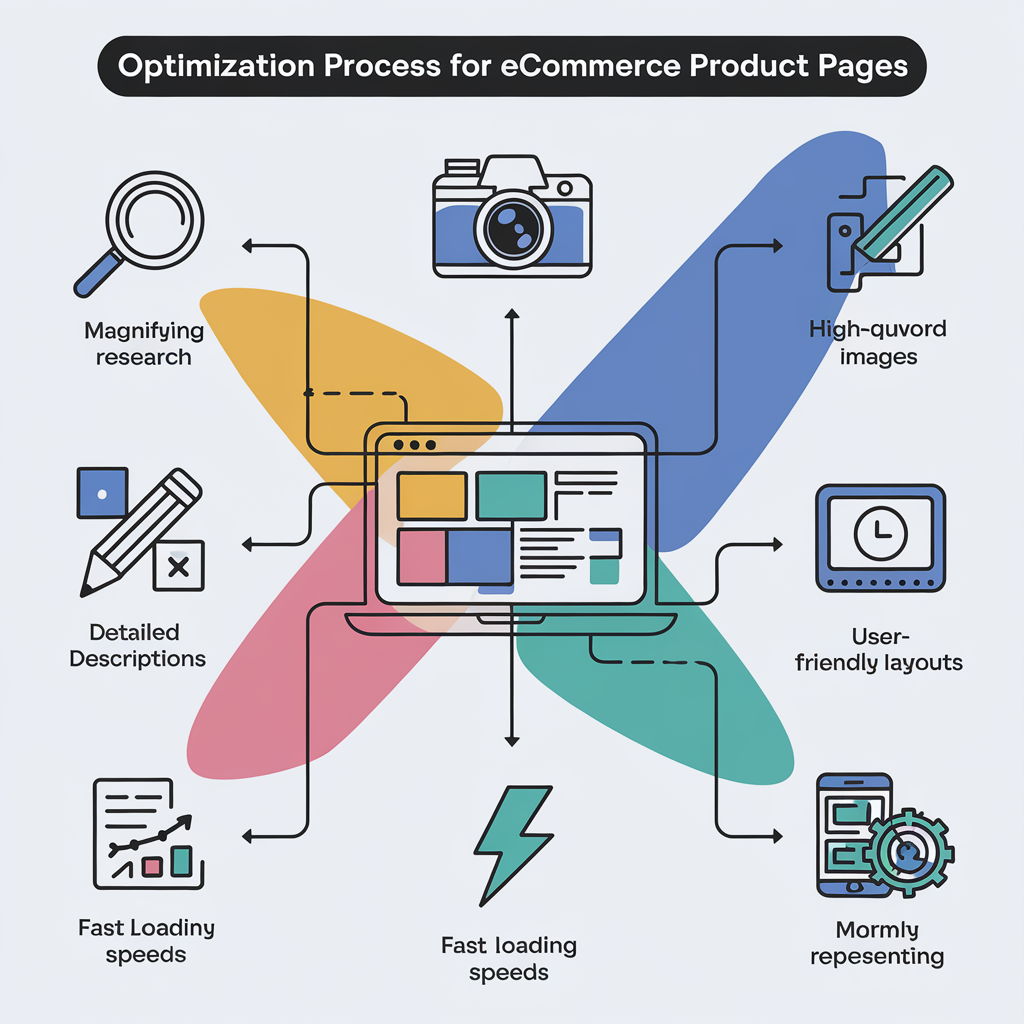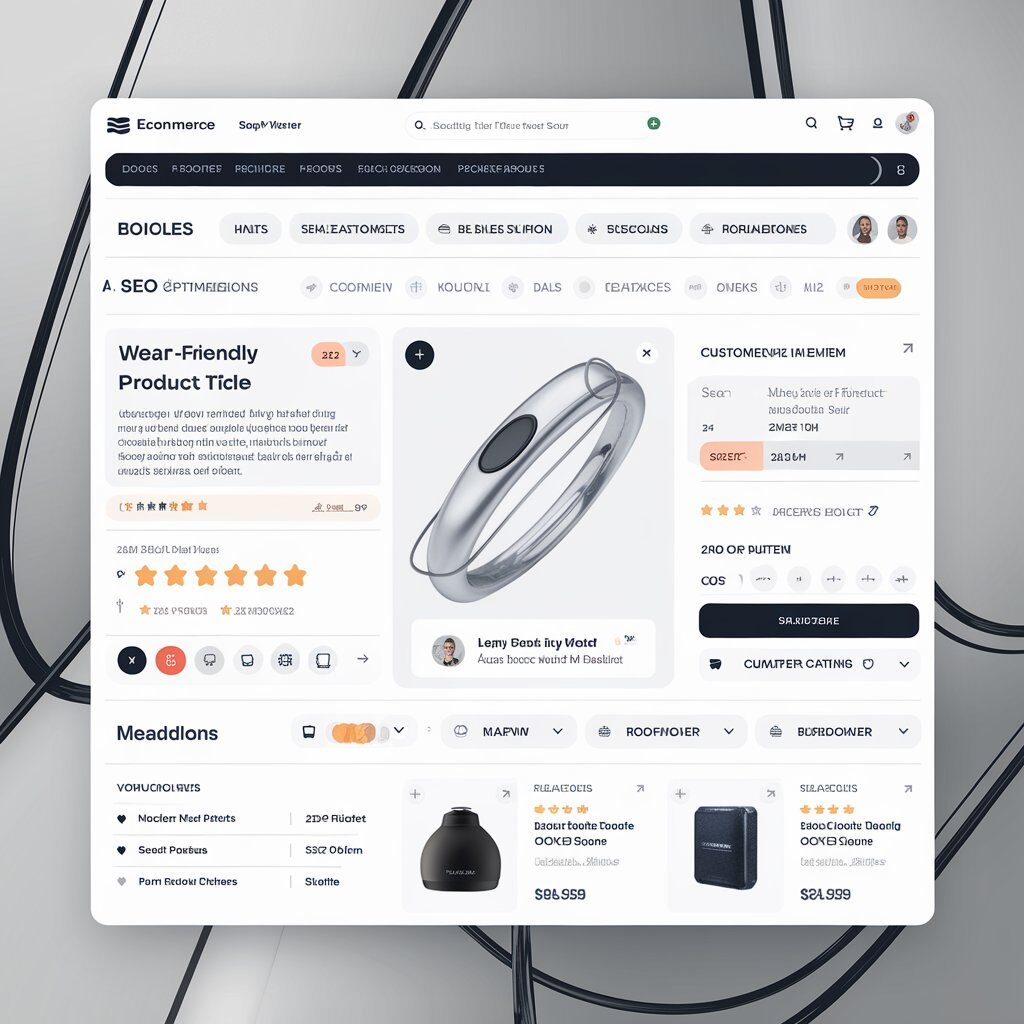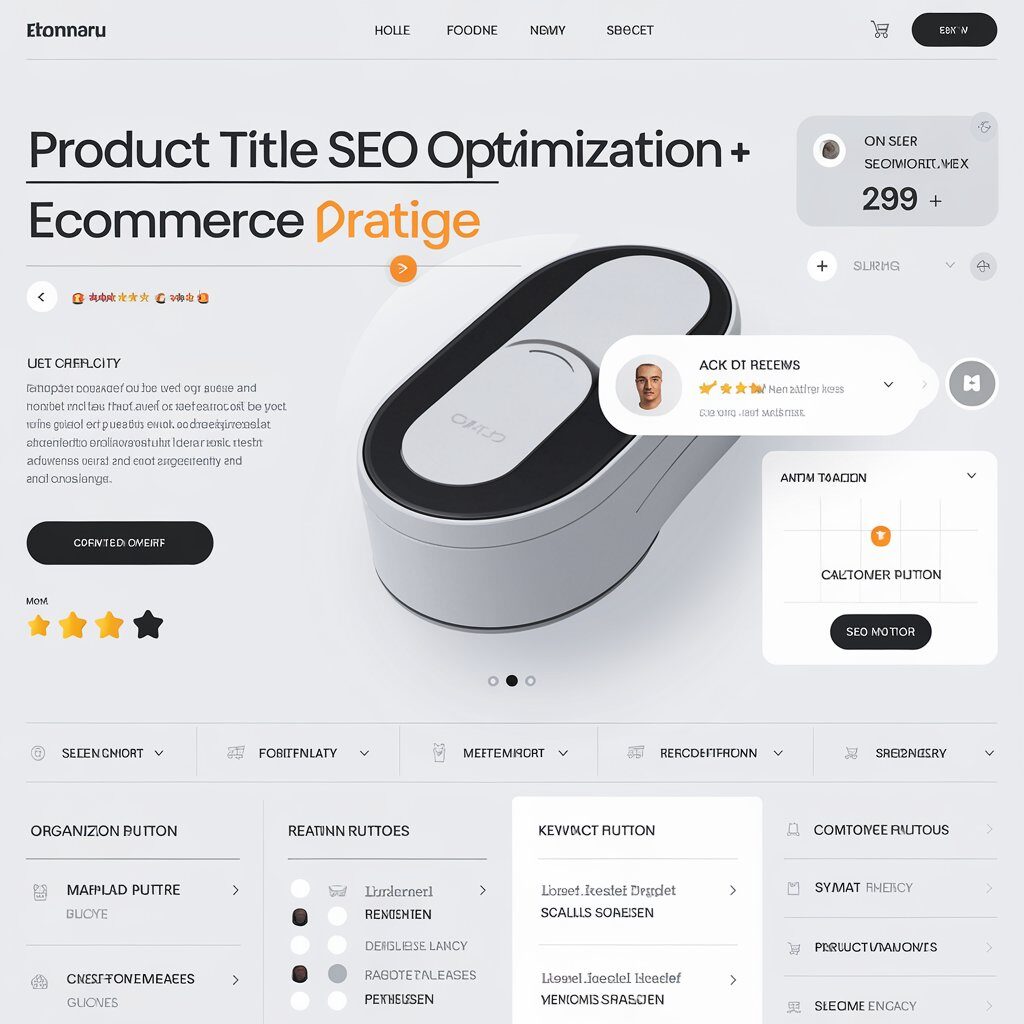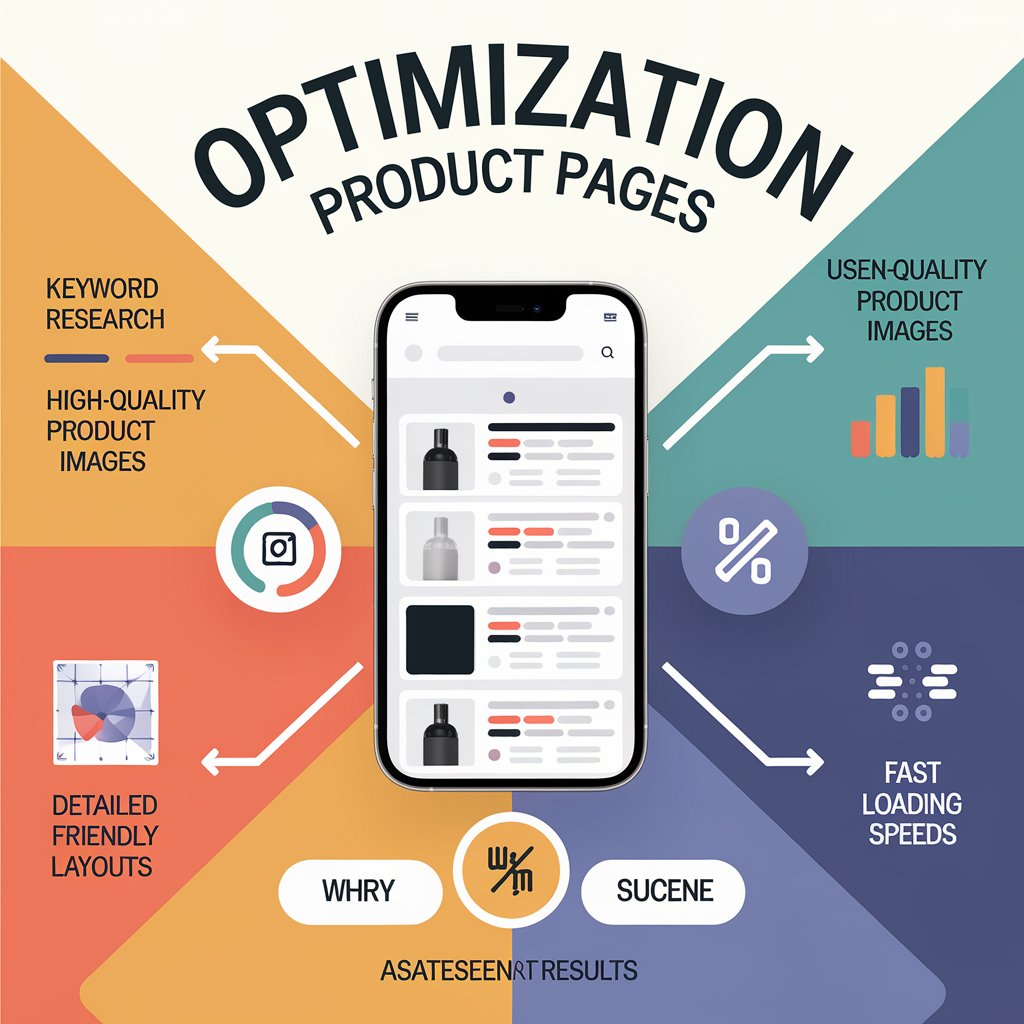How to do eCommerce SEO optimization for eCommerce product pages?
After the trend shift in online purchasing during the COVID-19, standing out is a challenge. Every online store is vying for the attention of potential customers. But how do you rise above the noise? How do you ensure your products are easily found by those who need them? The answer lies in eCommerce SEO optimization.
SEO, or Search Engine Optimization, is a crucial tool in the digital marketer’s arsenal. It’s the process of enhancing your online store’s visibility for search engines. In particular, it’s about optimizing your product pages to appear at the top of search engine results. This can drive more traffic to your site, leading to increased sales.

But eCommerce SEO is not a one-size-fits-all solution. It requires a deep understanding of your products, your audience, and the ever-changing algorithms of search engines. In this comprehensive guide, we’ll explore how SEO can be optimized for eCommerce product pages. We’ll delve into actionable strategies, best practices, and the latest trends in eCommerce SEO.
Whether you’re an eCommerce business owner, a digital marketer, or an SEO professional, this guide is designed to equip you with the knowledge to enhance your online store’s SEO performance. Let’s dive in.
Understanding eCommerce SEO Optimization
eCommerce SEO optimization is a specialized field. It’s about making your online store more visible in the search engine results pages (SERPs).
But it’s not just about visibility. It’s also about relevance and credibility. Your product pages need to appear in the right searches, at the right time. They need to be trusted and valued by both search engines and users. This is achieved through a combination of on-page and off-page SEO strategies. These include keyword optimization, meta tag optimization, link building, content marketing, and technical SEO, among others.
The Importance of eCommerce SEO
Why is eCommerce SEO so important? The answer is simple: it drives organic traffic to your online store.

Organic traffic, or visitors who find your site through a search engine, is highly valuable. These are people who are actively searching for the products you offer. They’re more likely to convert into customers than visitors who arrive through other channels. Moreover, eCommerce SEO is a cost-effective strategy.
Unlike paid advertising, it doesn’t require a continuous investment to keep the traffic flowing. Once your product pages are optimized, they can continue to attract organic traffic for months, or even years, to come.
Key Differences Between Traditional SEO and eCommerce SEO
While the principles of SEO are universal, eCommerce SEO has its unique challenges and opportunities. For one, eCommerce websites tend to be larger and more complex than other types of sites. They have hundreds, or even thousands, of product pages that need to be optimized. This requires a scalable and efficient approach to SEO.

Secondly, eCommerce SEO is highly competitive. You’re not just competing with other online stores, but also with marketplaces like Amazon and eBay. This calls for advanced strategies, such as competitor analysis and long-tail keyword optimization. Finally, eCommerce SEO is closely tied to the user experience.
It’s not enough to get visitors to your product pages. You also need to provide a seamless shopping experience that encourages them to make a purchase and return in the future. This involves aspects like site speed, mobile optimization, and user-friendly navigation. In the following sections, we’ll delve deeper into these aspects of eCommerce SEO optimization.
Conducting Effective Keyword Research
Keyword research is the foundation of eCommerce SEO optimization. It’s about identifying the words and phrases that potential customers use when searching for your products.
These keywords need to be incorporated into your product pages. They help search engines understand what your pages are about. More importantly, they help your pages appear in relevant searches. But not all keywords are created equal. Some keywords are more valuable than others.

This is determined by factors like search volume, competition level, and user intent. To conduct effective keyword research, you need to consider all these factors. You also need to use the right tools and techniques. Let’s explore this in more detail.
Identifying High-Intent Keywords
High-intent keywords are those that indicate a strong interest or intent to purchase. For example, “buy men’s running shoes online” is a high-intent keyword.

It’s specific, and it suggests that the searcher is ready to make a purchase. These are the types of keywords you want to target in your eCommerce SEO. They’re more likely to drive conversions than generic or informational keywords.
To identify high-intent keywords, you need to think like your customers. What terms would they use when they’re ready to buy? You can also use keyword research tools to find high-intent keyword suggestions.
Analyzing Competitors’ Keywords
Another effective strategy is to analyze your competitors’ keywords. This can give you insights into the keywords that are working for them. You can then incorporate these keywords into your own SEO strategy. But remember, just because a keyword works for a competitor doesn’t mean it will work for you. Your product offerings, target audience, and brand positioning may be different.
So, always consider the relevance and value of a keyword to your own business. There are various tools available for competitor keyword analysis. These tools can show you the keywords your competitors are ranking for, their search volume, and their competition level. Use this data to inform your own keyword strategy.
Optimizing Product Pages for Search Engines
Once you’ve identified your target keywords, the next step is to optimize your product pages. This involves incorporating your keywords into various elements of your pages.
These elements include the product title, meta description, headers, and product description. You also need to optimize your product images and URLs. But remember, SEO is not just about stuffing your pages with keywords. It’s about creating a seamless and engaging user experience.
Your content should be informative, relevant, and easy to read. It should also be structured in a way that makes it easy for search engines to crawl and index. Let’s delve into each of these elements in more detail.
Crafting SEO-Friendly Product Titles
Your product title is one of the most important elements of your product page. It’s the first thing users see when they land on your page.

It’s also one of the first things search engines look at when determining the relevance of your page. So, it’s crucial to craft SEO-friendly product titles. This means incorporating your primary keyword into your title. But it also means making your title compelling and descriptive. It should accurately represent your product and entice users to click.
Writing Compelling Meta Descriptions
Meta descriptions are the snippets of text that appear under your page title in search results. While they don’t directly impact your SEO rankings, they play a crucial role in click-through rates. A compelling meta description can entice users to click on your page over others. So, it’s worth spending time crafting a compelling meta description. Incorporate your primary keyword, but also highlight the unique selling points of your product. Make it clear what users can expect if they click on your page.
Utilizing Header Tags Effectively
Header tags (H1, H2, H3, etc.) are used to structure your content. They help users navigate your page and understand what it’s about. But they also help search engines understand the structure and relevance of your page. Your H1 tag should include your primary keyword and accurately represent the content of your page. Subsequent headers (H2, H3, etc.) should be used to break up your content into digestible sections. They should also incorporate relevant secondary keywords where possible.
Creating Unique and Engaging Product Descriptions
Product descriptions are where you can really showcase your product and convince users to buy. But they’re also an opportunity to incorporate your keywords and boost your SEO. Avoid generic or manufacturer-provided descriptions. Instead, write unique and engaging descriptions that highlight the features and benefits of your product. Incorporate your keywords naturally, and make sure your descriptions are easy to read and understand. Remember, your goal is not just to rank in search engines, but to convert visitors into customers.
Enhancing User Experience for Better SEO
SEO is not just about pleasing search engines. It’s also about providing a great user experience. In fact, search engines like Google consider user experience as a key ranking factor. This includes factors like mobile optimization, page load speed, and easy navigation. Let’s look at these factors in more detail.
Mobile Optimization and Responsive Design
More and more people are shopping on their mobile devices. In fact, mobile eCommerce sales are expected to account for 54% of total eCommerce sales by 2021.

So, it’s crucial to ensure your product pages are optimized for mobile. This means having a responsive design that adapts to different screen sizes. It also means ensuring your text is readable, your buttons are easy to click, and your images load quickly on mobile.
Improving Page Load Speed
Page load speed is another crucial factor in user experience. Users expect your pages to load quickly. If they don’t, they’re likely to leave and go to a competitor’s site. In fact, a one-second delay in page load time can lead to a 7% loss in conversions. So, it’s worth investing time and resources into improving your page load speed. This can involve optimizing your images, reducing server response time, and minimizing CSS and JavaScript. Remember, a faster site not only improves user experience but also boosts your SEO.
Technical SEO for eCommerce Websites
Technical SEO is the backbone of any successful SEO strategy. It involves optimizing your website’s infrastructure for search engine crawling and indexing.
For eCommerce websites, this can involve several key elements. These include structuring URLs for SEO, implementing schema markup, and ensuring website security with HTTPS. Let’s delve into each of these elements in more detail.
Structuring URLs for SEO
URLs are a key part of your website’s structure. They help search engines understand the content of your pages.
For eCommerce websites, it’s important to create SEO-friendly URLs for your product pages. This means including your primary keyword in the URL. It also means keeping your URLs short and descriptive. Avoid using unnecessary characters or words. Instead, aim for clean, readable URLs that accurately reflect the content of your page.
Implementing Schema Markup
Schema markup is a form of microdata that helps search engines understand your content. It can be particularly useful for eCommerce websites. For example, you can use schema markup to provide information about your products, such as price, availability, and reviews. This can help your product pages stand out in search results. It can also improve your click-through rate, which can boost your SEO.
Ensuring Website Security with HTTPS
Website security is a crucial aspect of technical SEO. Search engines prefer websites that are secure. This means using HTTPS, which encrypts data between your website and your users. HTTPS is particularly important for eCommerce websites, where users are entering sensitive information like credit card details. By ensuring your website is secure, you can build trust with your users and improve your SEO.
Building Authority with Link Building Strategies
Link building is a crucial part of eCommerce SEO optimization. It involves acquiring high-quality backlinks and leveraging social signals.

Both of these strategies can help build your website’s authority. This, in turn, can improve your search engine rankings. Let’s explore each of these strategies in more detail.
Acquiring High-Quality Backlinks
Backlinks are links from other websites to your own. They are a key factor in how search engines rank websites.
The more high-quality backlinks you have, the more authoritative your website appears to search engines. This can significantly boost your SEO. To acquire high-quality backlinks, consider strategies such as guest blogging, influencer partnerships, and creating shareable content. Remember, the quality of the backlinks is more important than the quantity.
Leveraging Social Signals
Social signals refer to the likes, shares, and comments your content receives on social media. While they are not a direct ranking factor, they can indirectly affect your SEO. This is because social signals can increase your online visibility and drive traffic to your website. They can also help your content get indexed faster by search engines.
To leverage social signals, ensure your content is shareable and engage with your audience on social media. Remember, social media is a two-way street. Engagement is key.
Content Marketing and SEO for eCommerce
Content marketing plays a vital role in eCommerce SEO optimization. It involves creating and sharing valuable content to attract and engage your target audience.
This can help improve your search engine rankings and drive more traffic to your website. In addition to product pages, consider creating other types of content such as blogs, buying guides, and videos. These can provide additional value to your audience and support your product pages. Let’s delve deeper into these strategies.
Creating Valuable Content Beyond Product Pages
Creating valuable content beyond product pages can enhance your eCommerce SEO. This includes content like blog posts, videos, infographics, and more.
Such content can help you rank for additional keywords and provide more value to your audience. It can also help you build authority and trust with your audience. Remember, the key is to create content that is relevant and valuable to your target audience.
Using Blogs and Buying Guides to Support Product Pages
Blogs and buying guides can be particularly effective in supporting your product pages. They can provide in-depth information about your products and help guide your customers’ buying decisions. For example, a buying guide can compare different products and help customers choose the right one.
A blog post can provide tips on how to use a product or share customer success stories. These types of content can help improve your SEO and enhance the customer experience. Remember, the goal is to provide value to your customers and help them make informed buying decisions.
Measuring and Improving Your eCommerce SEO Efforts
To ensure your eCommerce SEO optimization efforts are effective, it’s crucial to measure and improve them regularly. This involves tracking your performance, analyzing the data, and making necessary adjustments.
There are several tools and techniques you can use for this, including analytics and A/B testing. Let’s explore these in more detail.
Utilizing Analytics to Track Performance
Analytics play a crucial role in eCommerce SEO optimization. They provide valuable insights into your website’s performance and help you make data-driven decisions.

For example, you can use Google Analytics to track metrics like organic traffic, bounce rate, and conversion rate. These metrics can help you understand how well your SEO efforts are working and where improvements are needed. Remember, the key is to regularly monitor your analytics and adjust your strategies based on the data.
A/B Testing for Conversion Rate Optimization
A/B testing is another effective technique for improving your eCommerce SEO. It involves testing two versions of a webpage to see which one performs better. For example, you might test two different product descriptions, images, or call-to-action buttons. The version that leads to higher conversions is the one you should implement.
Remember, the goal of A/B testing is to optimize your webpages for better conversions, which can in turn improve your SEO. By continuously testing and optimizing your webpages, you can enhance your eCommerce SEO and drive more sales.
Staying Ahead: eCommerce SEO Trends and Best Practices
In the ever-evolving world of eCommerce, staying ahead of the curve is crucial. This means keeping up with the latest trends and best practices in eCommerce SEO optimization.
Two key areas to focus on are voice search optimization and adapting to algorithm updates and SEO innovations. Let’s delve into these in more detail.
Voice Search Optimization
Voice search is becoming increasingly popular, thanks to the rise of smart speakers and voice assistants. This trend has significant implications for eCommerce SEO.
To optimize for voice search, consider the natural language and conversational queries users might use. For example, instead of typing “men’s leather shoes,” a user might say “show me men’s leather shoes in size 10.” Your product pages should be optimized to answer these types of queries. Remember, voice search optimization is not just about keywords, but also about providing clear, concise answers to users’ questions.
Adapting to Algorithm Updates and SEO Innovations
Search engine algorithms are constantly changing. To stay ahead, you need to keep up with these changes and adapt your eCommerce SEO strategies accordingly. For example, Google’s recent focus on user experience signals, such as page load speed and mobile-friendliness, has made these factors more important for SEO.
Staying updated with the latest SEO news and trends can help you adapt your strategies and maintain your search engine rankings. Remember, eCommerce SEO is not a one-time task, but an ongoing process that requires continuous learning and adaptation.
Conclusion and Next Steps
We’ve covered a lot of ground in this comprehensive guide on eCommerce SEO optimization. From conducting effective keyword research to optimizing product pages and enhancing user experience, we’ve delved into the key aspects of eCommerce SEO.
But remember, SEO is not a one-time task. It’s an ongoing process that requires continuous learning, testing, and optimization. Stay updated with the latest trends and best practices, and don’t be afraid to experiment and adapt your strategies.
With the right approach and persistence, you can improve your eCommerce site’s visibility, drive more organic traffic, and ultimately, increase sales. So, what are you waiting for? Start optimizing your eCommerce product pages today!


